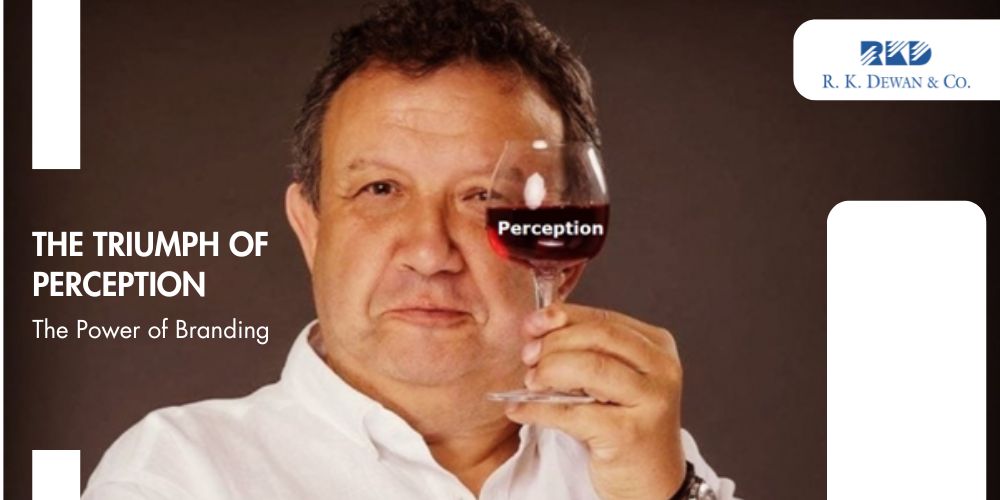Eric Boschman
In the vast landscape of consumer markets, the success of a product isn’t solely reliant on its inherent quality. Rather, it’s the perception of that quality that often shapes consumer behavior. The story of ‘Chateau Colombier,’ a seemingly ordinary and inexpensive wine rebranded into a gold medal-winning product, underscores the immense power of branding and perception in influencing consumer choices.
The Tale of 'Chateau Colombier' is a classic example of this
Eric Boschman, a renowned sommelier, and the team at ‘On n’est pas des pigeons’ embarked on a daring experiment. They selected the worst quality supermarket wine-named ‘Delhaize’ priced at €2.50, transformed it into ‘Chateau Colombier,’ and adorned it with an enticing label and a fabricated story of origin that it has been made with grapes of the Côtes de Sambre and Meuse (Wallonia) varieties. This wine, originally far from extraordinary, was strategically packaged and marketed as a premium product.
Their concocted narrative and the aesthetic makeover of the bottle set the stage for the product’s perceived quality to soar. Thereafter, Boschman promoted the wine on social media a few days prior to the competition, labelling it as “exceptional.” It is well known that the opinions of well-known sommeliers have a ripple effect on their colleagues in the industry.
This intriguing experiment entered the wine into a prestigious competitionGilbert & Gaillard International Wine Competition, where it defied its actual characteristics to secure the gold medal and praise from judges. The judges’ feedback, embellishing the wine with attributes it did not possess, highlighted the subjective nature of perceived quality.
The judges quoted that wine is “Bright garnet red colour. Shy nose that combines stone fruits, currants, discreet oak. Smooth, nervous and rich palate with young and clean aromas that promise a pleasant complexity. Evolution on fine spices and a touch of soot. Very interesting“.
Perceived Quality: Perception Reigns Supreme
Perceived quality is the lens through which consumers view a product’s attributes, often eclipsing its tangible characteristics. It hinges on the consumer’s subjective experiences, beliefs, and social influences. In the case of ‘Chateau Colombier,’ the premium branding and association with a respected sommelier drastically altered the perceived value of the wine, demonstrating how perception can trump reality in consumer decision-making.
Divergence of Perceived vs. Actual Quality
Actual quality refers to the genuine characteristics and attributes of a product. However, perceived quality deviates from this reality, driven by subjective interpretations and external influences. The discrepancy between the two is vividly showcased in the ‘Chateau Colombier’ experiment, where the product’s actual low quality was overshadowed by the fabricated narrative and strategic branding, resulting in a perceived value far greater than its reality.
The Bandwagon Bias: Influence of Social Validation (FOMO)
Enter the Bandwagon Bias, a cognitive shortcut deeply rooted in human psychology. This bias compels individuals to align with popular beliefs or trends without critical evaluation. Boschman’s endorsement and the wine’s recognition in a prestigious competition fueled the bandwagon effect. Consumers, influenced by the perceived popularity and acclaim, followed suit, embracing the product based on its newfound reputation rather than its inherent quality.
The Market Implications
This captivating experiment underscores the pivotal role of branding and perception in consumer markets. It accentuates the ability of strategic branding to reshape consumer perceptions and drive sales, despite the actual quality of the product. It serves as a testament to the profound impact of narrative, image, and social validation on consumer behavior.
Applicability of the Giffen’s paradox and Veblen’s Law
In market economics, where supply and demand waltz hand-in-hand, exceptions like the Giffen’s paradox and Veblen’s Law introduce intriguing twists. Take the case of Boschman’s supermarket wine. Normally according to the relation between supply, demand and prices, higher prices drive down demand, a principle enshrined in the law of demand. But here, exclusivity trumped affordability. By associating the wine with a respected sommelier and premium packaging, Boschman transformed it from a mundane supermarket option into a symbol of discerning taste.
This is where Veblen’s Law takes center stage. It posits that for certain goods, higher prices actually increase their desirability. Why? Because exclusivity becomes intertwined with value. Owning an expensive, “Veblen good” sends a silent message about social status and discerning taste. The higher the price, the more exclusive the club, and the stronger the allure.
Boschman’s gambit exemplifies this perfectly. By elevating the perceived quality of his wine through branding and association, he created a “Veblen’s good” on the supermarket aisle. The paradox doesn’t stop there. Enter the Giffen’s paradox, which states that for some essential, inferior goods, price increases can also lead to higher demand. This happens because the price hike outpaces income adjustments, forcing consumers to substitute more expensive options for even cheaper but less preferred ones.
So, while Boschman’s wine isn’t a traditional Giffen good, its price manipulation taps into the same psychological principle. By artificially inflating its perceived value, he created a situation where, counter intuitively, a higher price for a relatively inferior productled to increased demand.
This interplay between perception, branding, and economic principles reveals the fascinating complexities of consumer behavior. It reminds us that sometimes, price is not just a number on a tag, but a carefully crafted story that can reshape desire and redefine value.
Conclusion
The ‘Chateau Colombier’ saga unravels the complex interplay between actual quality, perceived quality, and the Bandwagon Bias. It illuminates the art of crafting a compelling brand image to wield significant influence in consumer decision-making, illustrating that in the realm of consumer markets, perception often reigns supreme.



No comment